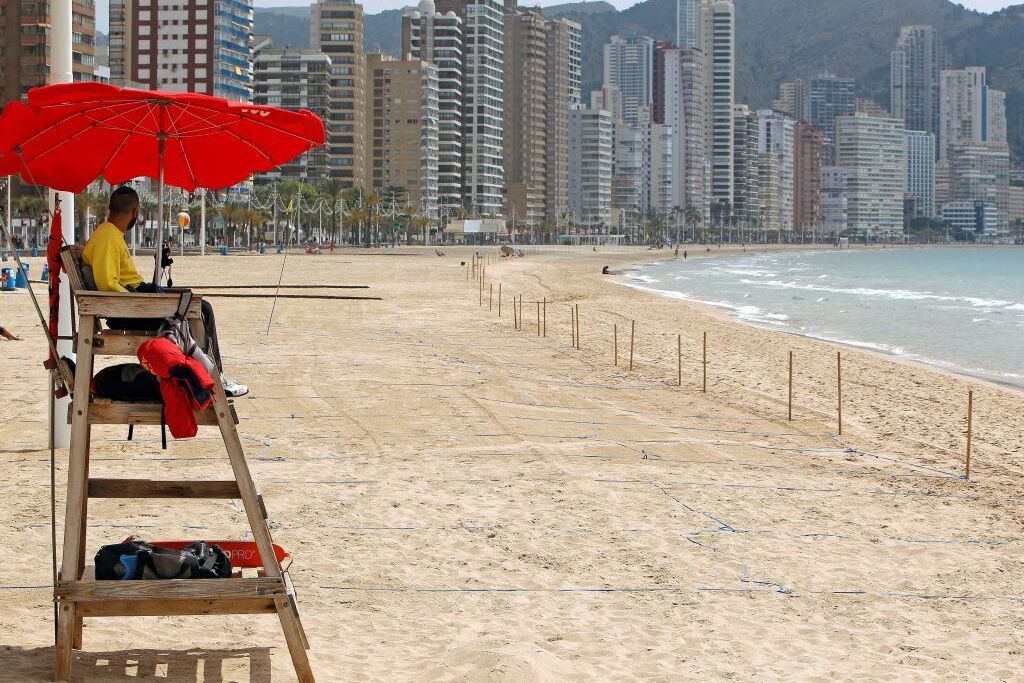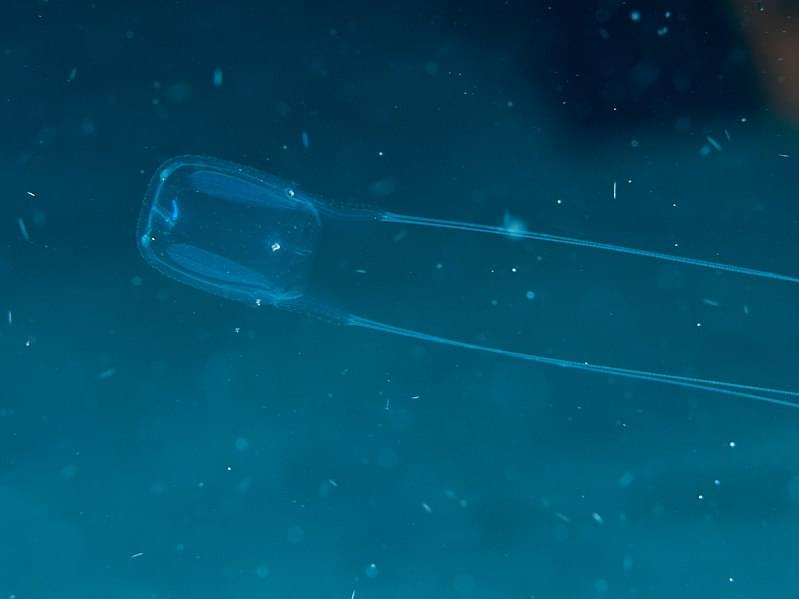
The ranking of the 10 most poisonous animals in the world
 Photo by Rickard Zerpe. There is no Wanderluster in the world that does not fear the possibility of coming across during one of his trips in particular species not exactly welcoming– poisonous animals.
Photo by Rickard Zerpe. There is no Wanderluster in the world that does not fear the possibility of coming across during one of his trips in particular species not exactly welcoming– poisonous animals.
In this article, here is a small guide on most poisonous animals in the world. A small vademecum (without any scientific claim) to put in the bag, next to the passport, to know its typical habitats, effects and poisonous timing…and above all to keep him away from it promptly.
11-Indian Red Scorpion (India and South Asia)
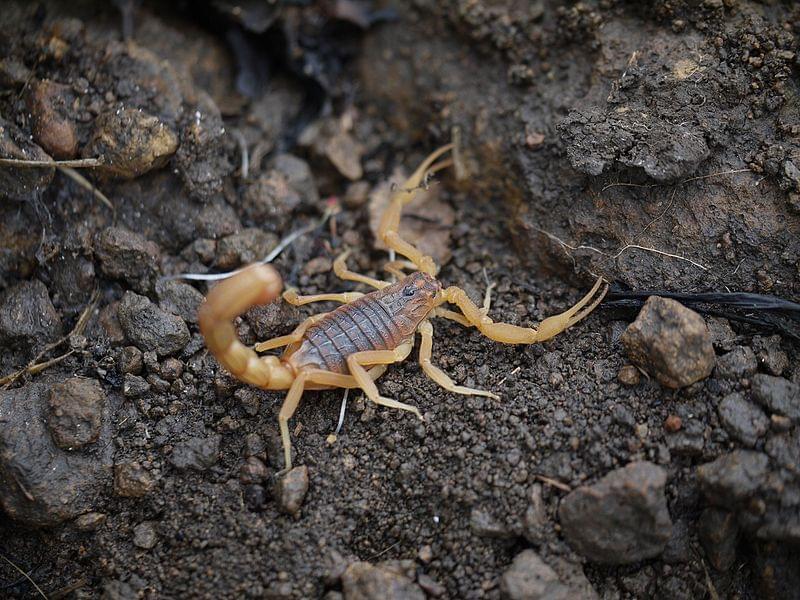 Photo by Dinesh Valke. There are many species of Scorpions existing in the world, and many are poisonous ones, including the Indian Red Scorpion: one of the most poisonous and lethal, especially for children and the elderly.
Photo by Dinesh Valke. There are many species of Scorpions existing in the world, and many are poisonous ones, including the Indian Red Scorpion: one of the most poisonous and lethal, especially for children and the elderly.
It has a color between Orange and brown, measures from 60 to 90 mm and has a very large sting. It lives in flat or rocky areas, especially if there are mango or eucalyptus crops. In the event of a puncture, a very strong pain in the affected area, cyanosis, vomiting, cardiac arrhythmia, convulsions until even death.
10-banana spider (South and Central America)
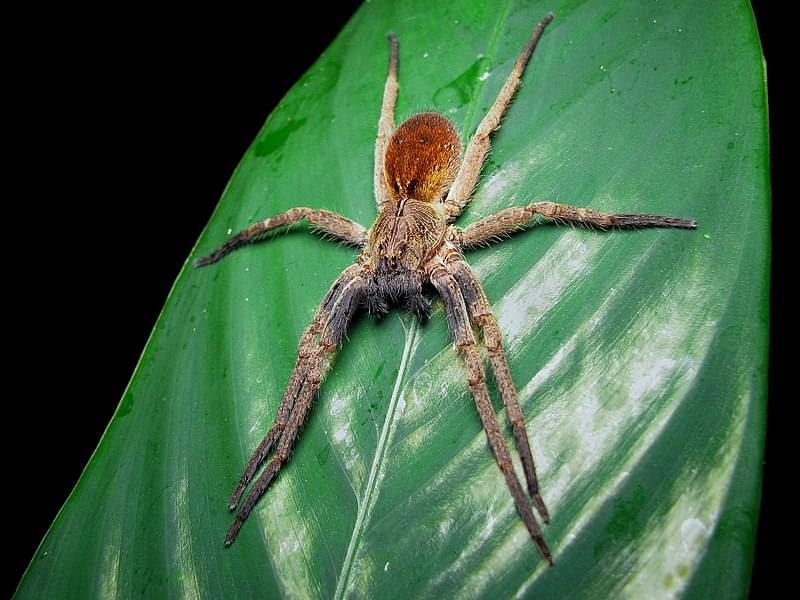 Photo by João P. Burini. One of the largest spiders in the world (it can measure even 15 cm), it moves mainly at night in search of food, by day it remains hidden between rocks, logs and often between banana helmets (hence the name), as well as inside homes, damp corners, clothes, shoes or garbage.
Photo by João P. Burini. One of the largest spiders in the world (it can measure even 15 cm), it moves mainly at night in search of food, by day it remains hidden between rocks, logs and often between banana helmets (hence the name), as well as inside homes, damp corners, clothes, shoes or garbage.
It has a brown tending to brown color and the body is covered with hair. Its poison is very powerful and causes acute paintachycardia, vomiting, diarrhea and often anaphylactic shock. A particular consequence for men could be an erection that could last several hours, which often leads to subsequent impotence.
9 – Stone Fish (Pacific Area)
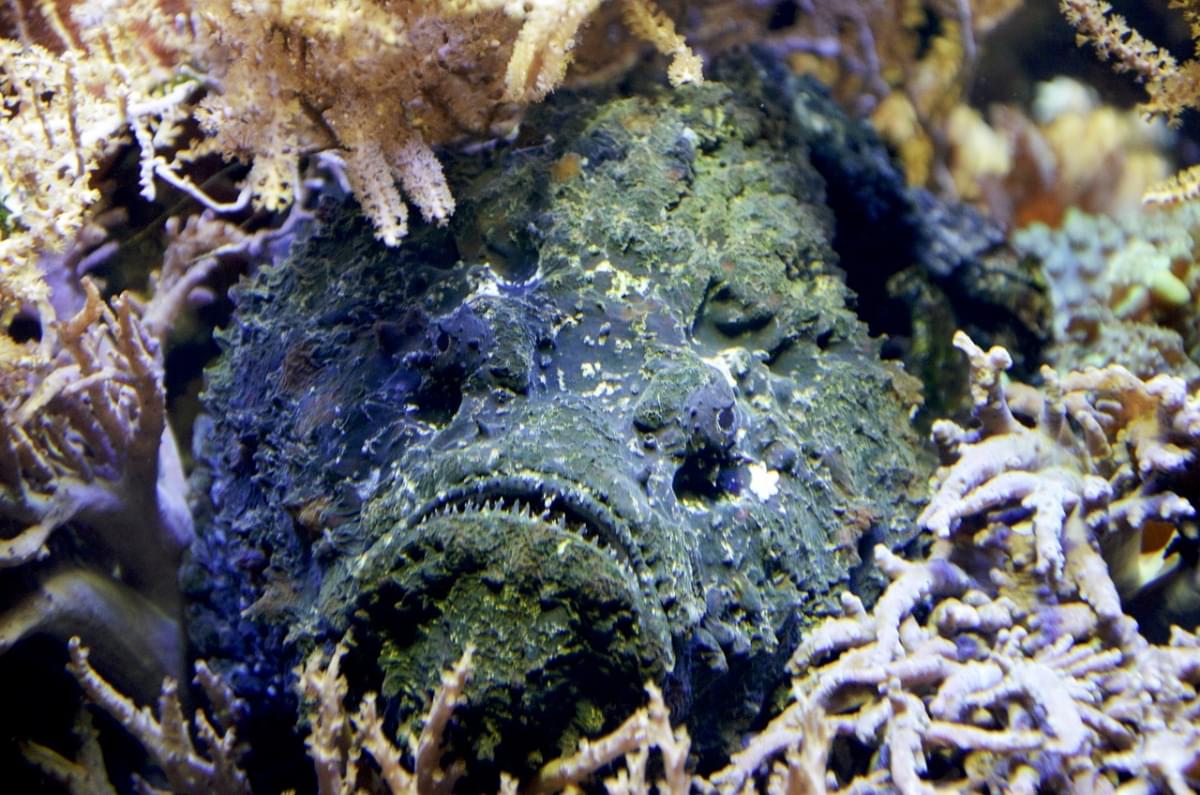 The Stone Fish is the second most poisonous fish in the world and it was ranked as the ugliest ever. It lives in shallow water (about 40 cm), near coral reefs.
The Stone Fish is the second most poisonous fish in the world and it was ranked as the ugliest ever. It lives in shallow water (about 40 cm), near coral reefs.
Its color varies from red-pink to orange-brown and dark blue, but the fish nevertheless has the ability to camouflage among corals, rocks, sand and mud.
It is equipped with 13 poisonous spikes, which if stepped on could be lethal.
8-indoor Taipan (Australia)
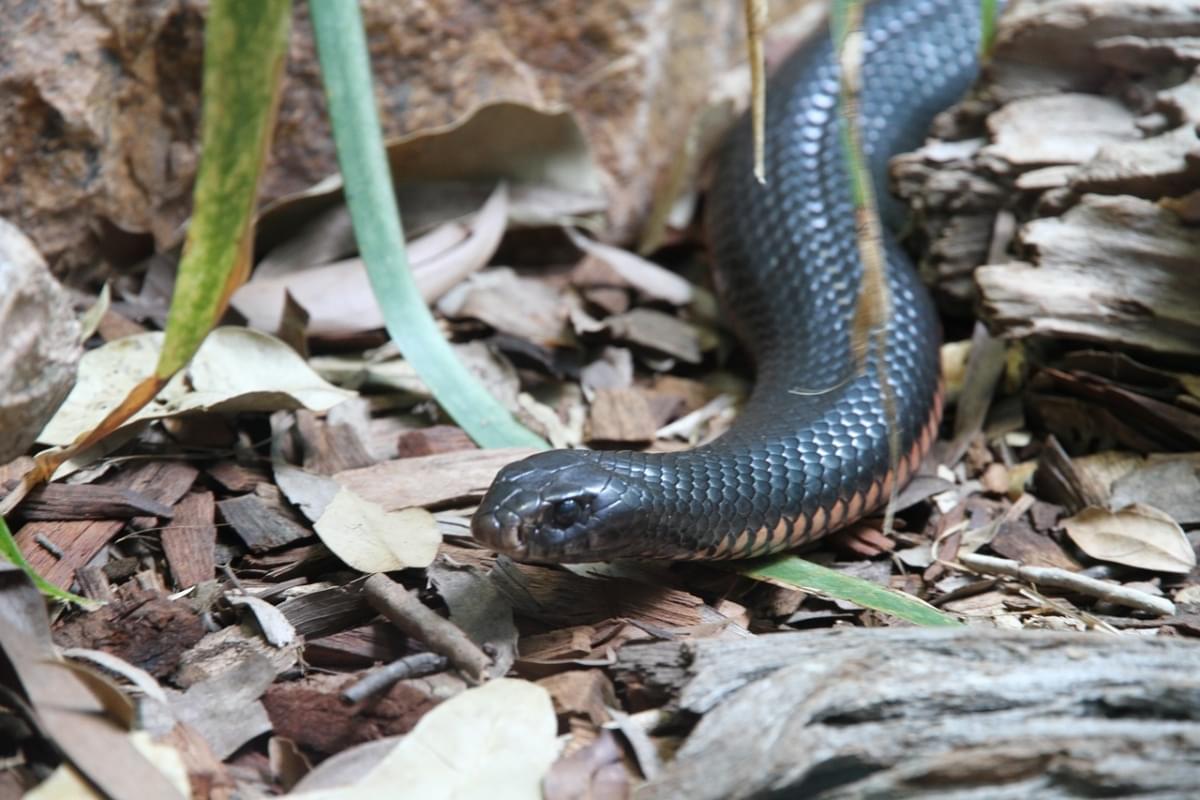 Rather remained in the presence of Man, The Taipan of the interior is nevertheless one of the most poisonous snakes in the world: one bite of it could contain enough poison to kill a hundred adult men.
Rather remained in the presence of Man, The Taipan of the interior is nevertheless one of the most poisonous snakes in the world: one bite of it could contain enough poison to kill a hundred adult men.
Its habitat is the arid flood plain: the absence of rain typical of this type of landscape causes cracks in the clay soil, and it is here that this snake creeps in and lives. It measures up to two and a half meters, has a whip tail and is covered with very shiny scales. Its bite causes nausea, headache, abdominal pain, diarrhea, up to paralysis or suffocation.
7-King Cobra (Southeast Asia)
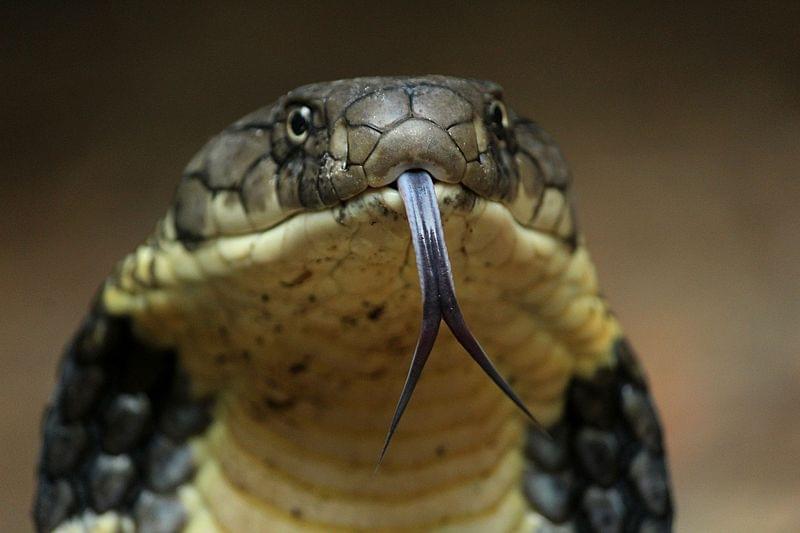 Photos at Marathekedar93. Classified as the largest and longest among poisonous snakes, the King Cobra with a single bite could kill up to twenty adult men. It lives in jungles, forests, woods, savannas and mangrove swamps and usually keeps away from humans, however it is very dangerous if it feels its habitat threatened.
Photos at Marathekedar93. Classified as the largest and longest among poisonous snakes, the King Cobra with a single bite could kill up to twenty adult men. It lives in jungles, forests, woods, savannas and mangrove swamps and usually keeps away from humans, however it is very dangerous if it feels its habitat threatened.
It measures up to six meters, has a tapered body and a pointed tail, a flattened head and two occipital scales on the nape. Before biting, the king cobra makes a hiss: in this case it is advisable to move away promptly but with not too fast or nervous movements. The bite is especially painful, and its poison attacks the nervous system.
6 – puffer fish (tropical seas)
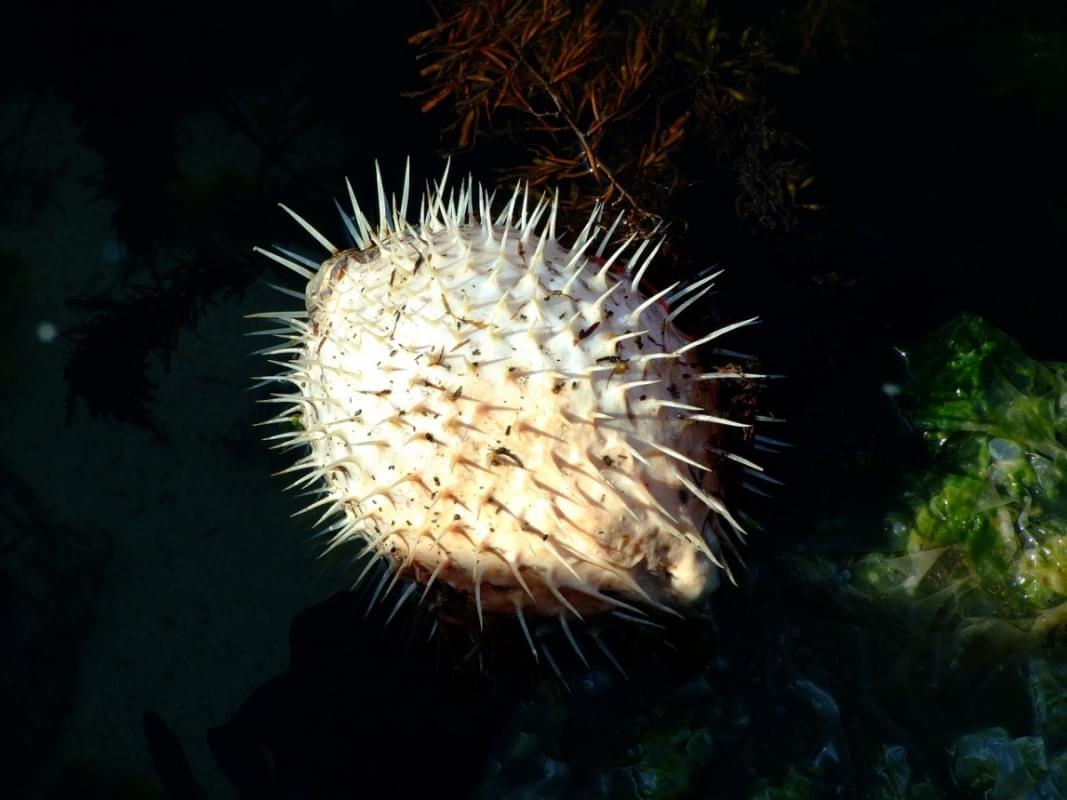 One of the most poisonous animals in the world, but it does not attack Man, unlike the others so far known. Containing tetrodotoxin, a lethal substance for humans, puffer fish could kill even up to thirty men. There are several species, from larger to smaller, all however united by an oval body, a dorsal and anal fin that allows them to move and four very sharp front teeth. Some have the body covered with spines and generally all change color depending on the environmental context in which they are.
One of the most poisonous animals in the world, but it does not attack Man, unlike the others so far known. Containing tetrodotoxin, a lethal substance for humans, puffer fish could kill even up to thirty men. There are several species, from larger to smaller, all however united by an oval body, a dorsal and anal fin that allows them to move and four very sharp front teeth. Some have the body covered with spines and generally all change color depending on the environmental context in which they are.
Puffer fish is considered a delicacy in the field of Japanese cuisine, however, if not prepared by extremely experienced and qualified hands, eating it could be very dangerous. The effects of its poison range from paralysis to death.
5-tunnel Spider (Australia)
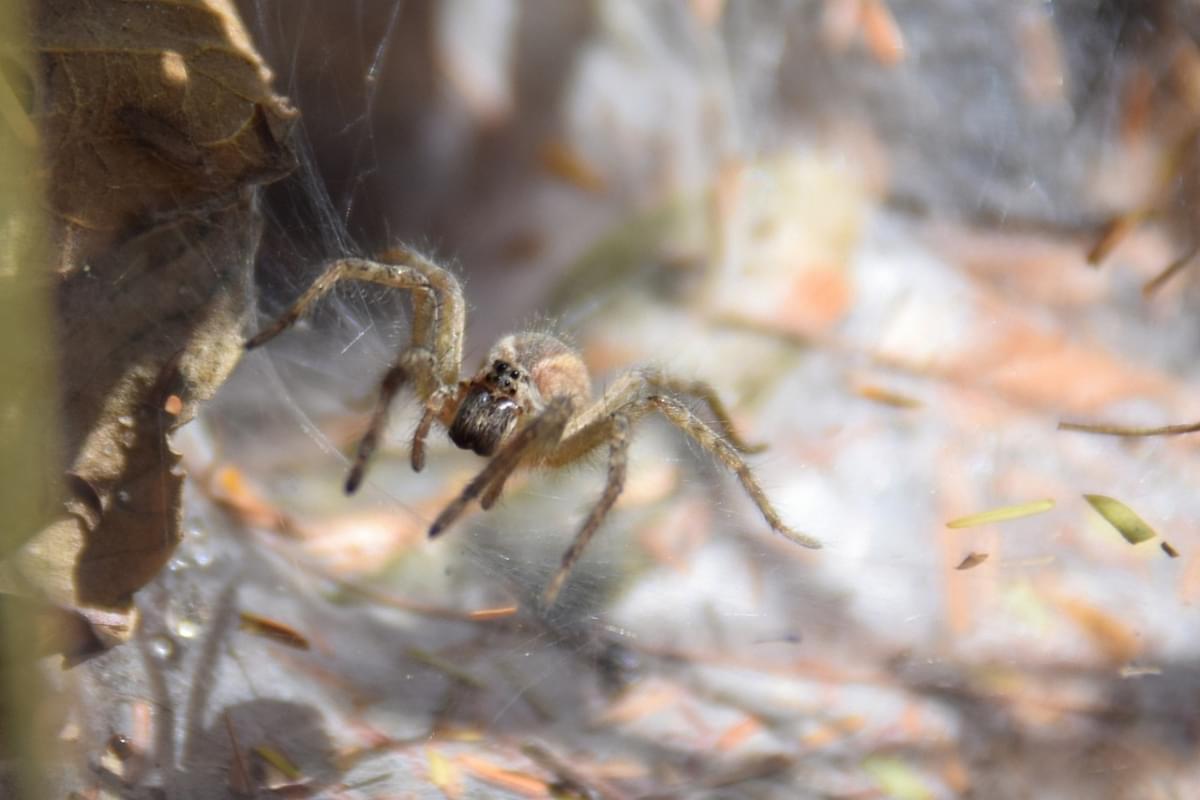 Widespread in Australia, where it is not difficult to find it even inside homes, this type of spider is equipped with two large fangs they cause a very strong pain during the bite and is considered one of the most poisonous animals in the world.
Widespread in Australia, where it is not difficult to find it even inside homes, this type of spider is equipped with two large fangs they cause a very strong pain during the bite and is considered one of the most poisonous animals in the world.
However, it is good to remember that in 1981 it was created a powerful antidote to his poison, which ended the many deaths due to his bite.
4-Blue-Ringed Octopus (Australian and Southeast Asian coasts)
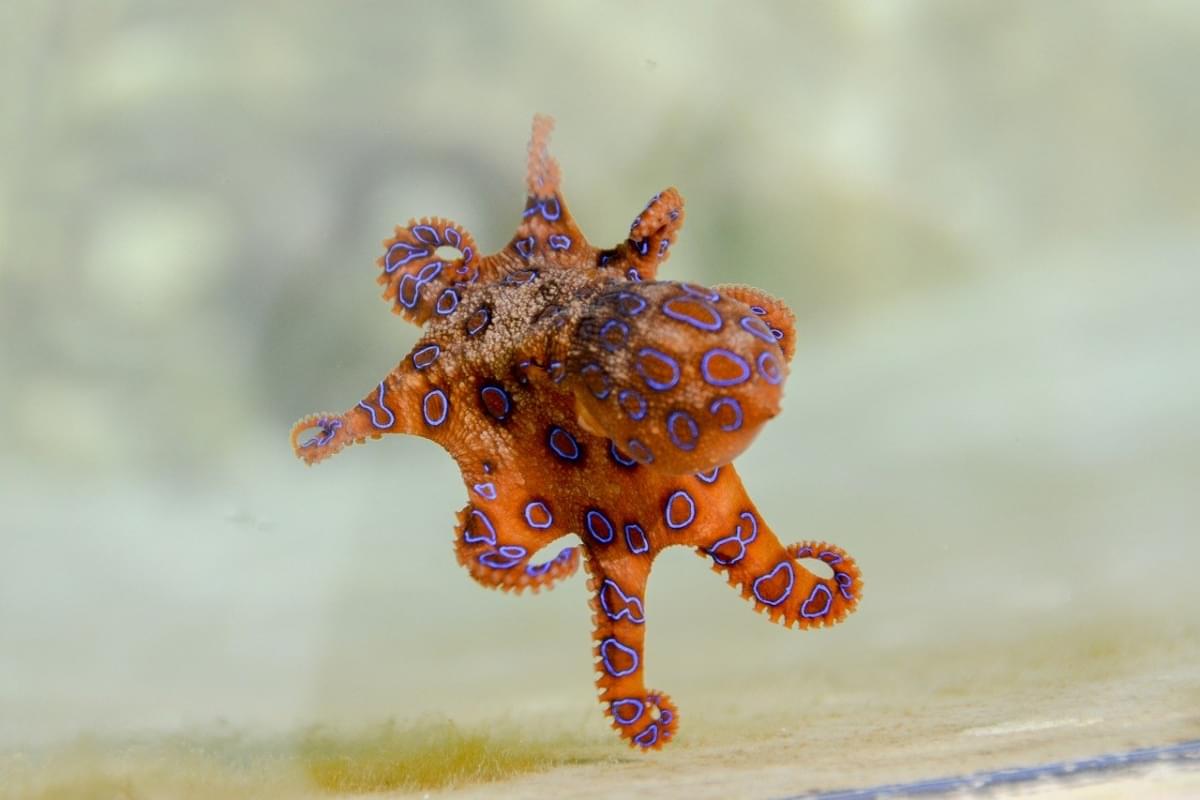 Similar in size to a golf ball, this type of octopus it also lives in shallow water and it is very dangerous: it is much more poisonous than cobra.
Similar in size to a golf ball, this type of octopus it also lives in shallow water and it is very dangerous: it is much more poisonous than cobra.
It has eight tentacles and usually a golden-brown color and when it feels threatened by extraneous presences it shows off the blue rings well which completely cover his body. The bite is usually painless, but it causes nausea, blurred vision, paralysis, asphyxia and cardiac arrest in a very short time. There is currently no antidote.
3 – poison dart frog (South and Central America)
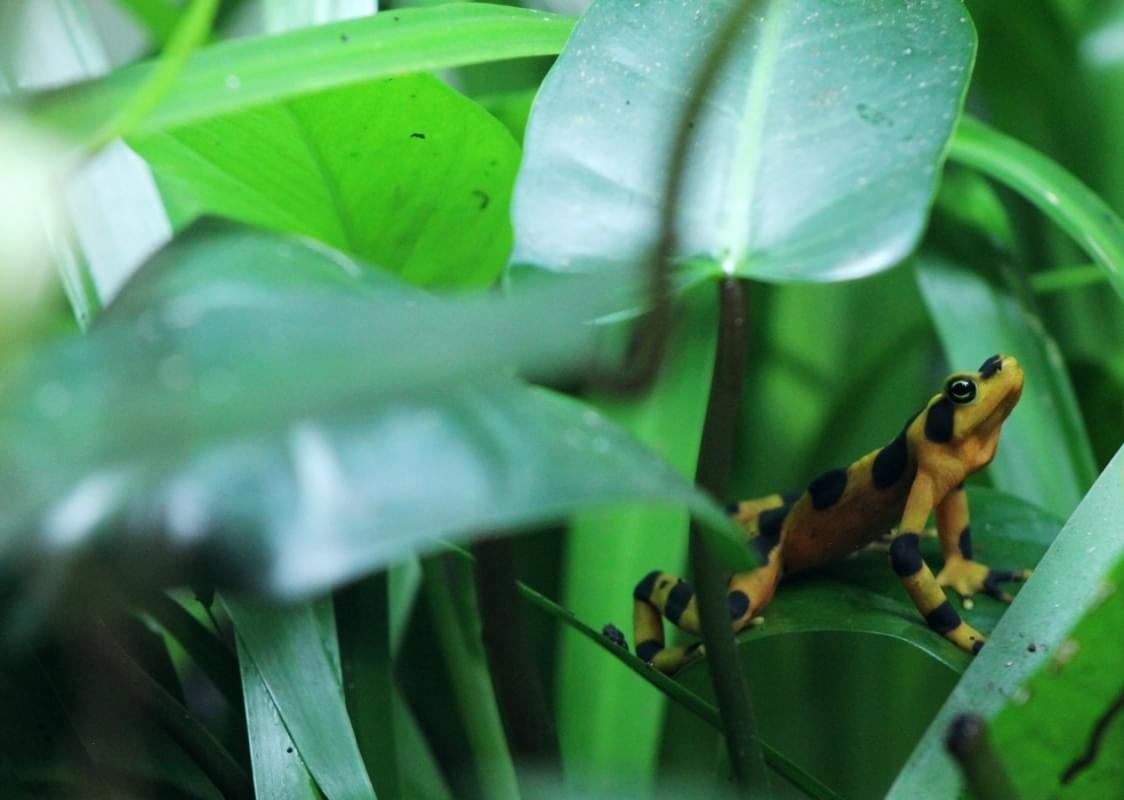 Very poisonous, this type of frog has enough poison to kill even ten men in very short timeframes.
Very poisonous, this type of frog has enough poison to kill even ten men in very short timeframes.
They exist in different color ranges and usually live in the rainforest, in South America. The most poisonous species is the Golden poison. They are really tiny, so it is often difficult to even realize their presence.
2-marbled cone snail (tropical Pacific Area)
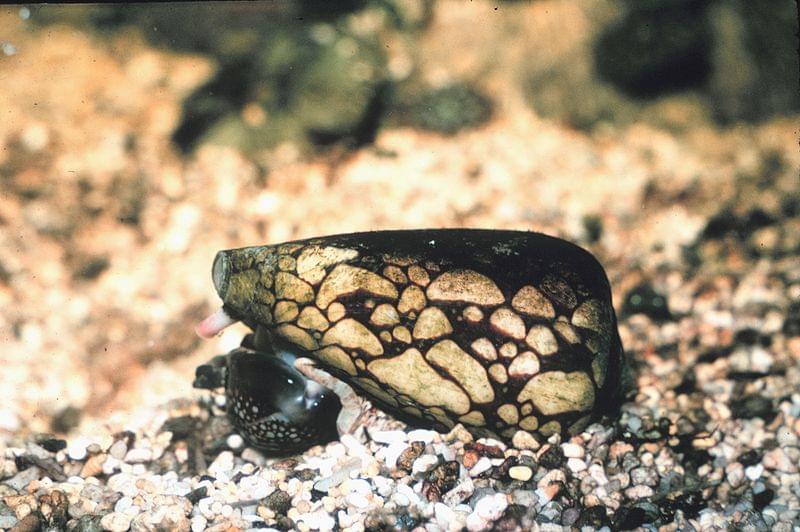 Considered one of the most poisonous animals in the world, this snail contains a poison even ten thousand times more powerful than morphine which today is used as an anesthetic. It usually lives in shallow water and has the appearance very similar to that of a snail: its shell is adorned with spiral patterns of brown color and has an elongated shape.
Considered one of the most poisonous animals in the world, this snail contains a poison even ten thousand times more powerful than morphine which today is used as an anesthetic. It usually lives in shallow water and has the appearance very similar to that of a snail: its shell is adorned with spiral patterns of brown color and has an elongated shape.
Bites by means of harpoon teeth over a centimeter long, and its bite causes blurred vision, dizziness, respiratory failure and cardiac arrest.
1-Medusa Cubozoa (tropical Pacific Area)
 Photo by Rickard Zerpe. Dangerous, this type of jellyfish can get to have tentacles up to three meters long and it is absolutely the most poisonous jellyfish in the world.
Photo by Rickard Zerpe. Dangerous, this type of jellyfish can get to have tentacles up to three meters long and it is absolutely the most poisonous jellyfish in the world.
Most encounters with Cubozoa are not fatal, thanks to the contact area that is very limited, but its crawling, as well as very painful, causes of necrosis against which there are still no effective remedies.








